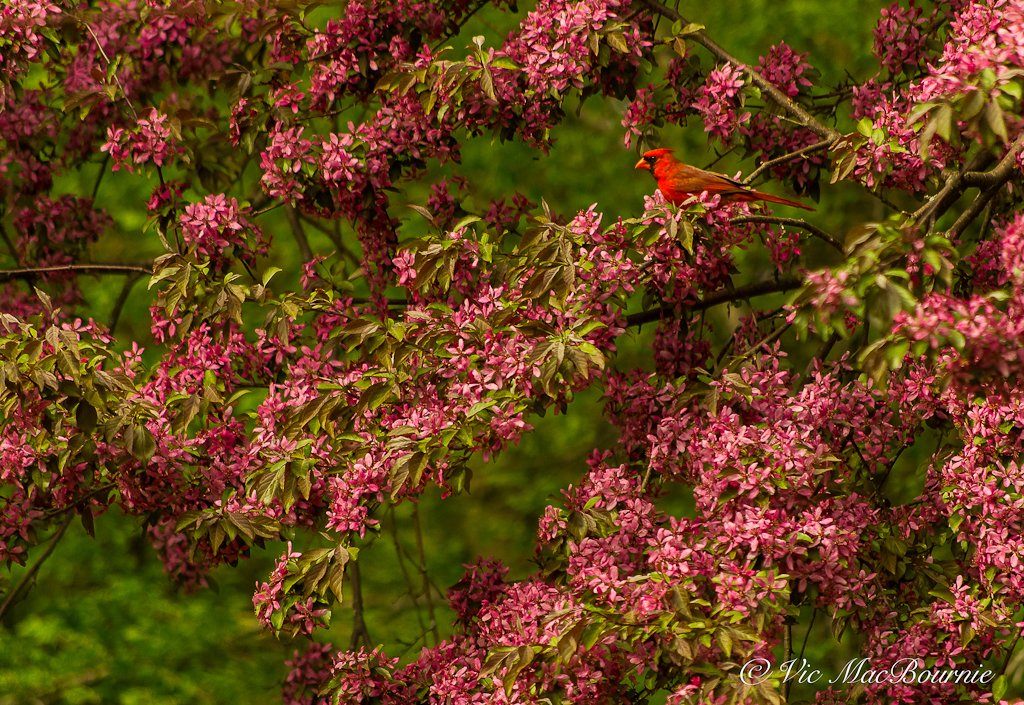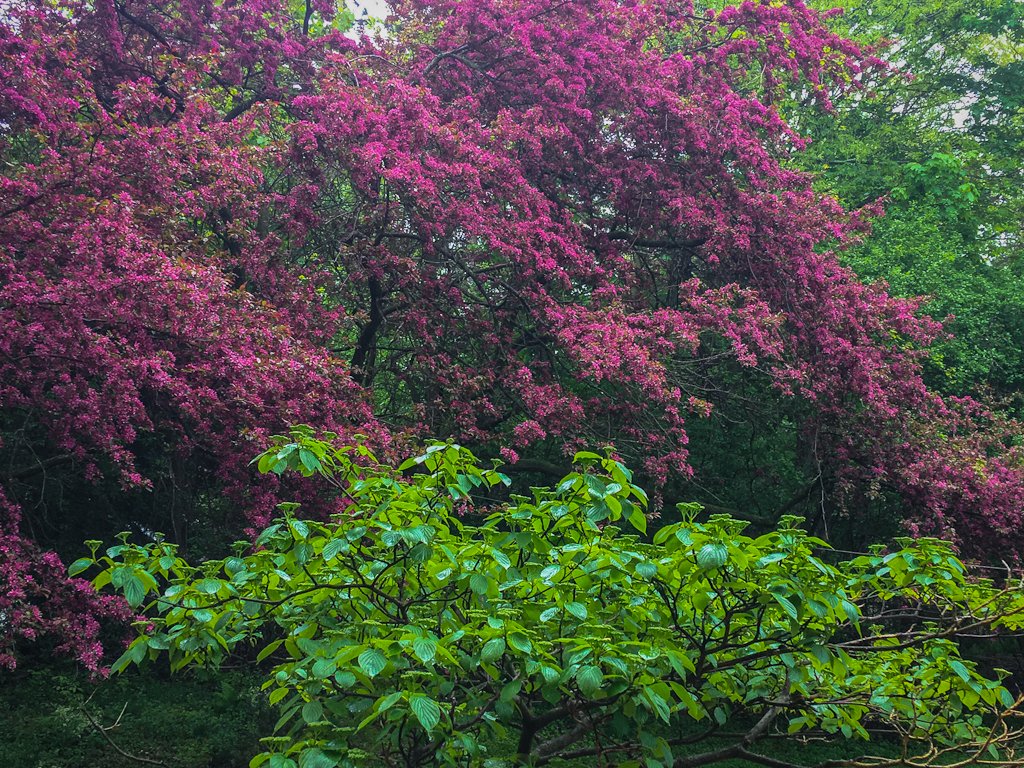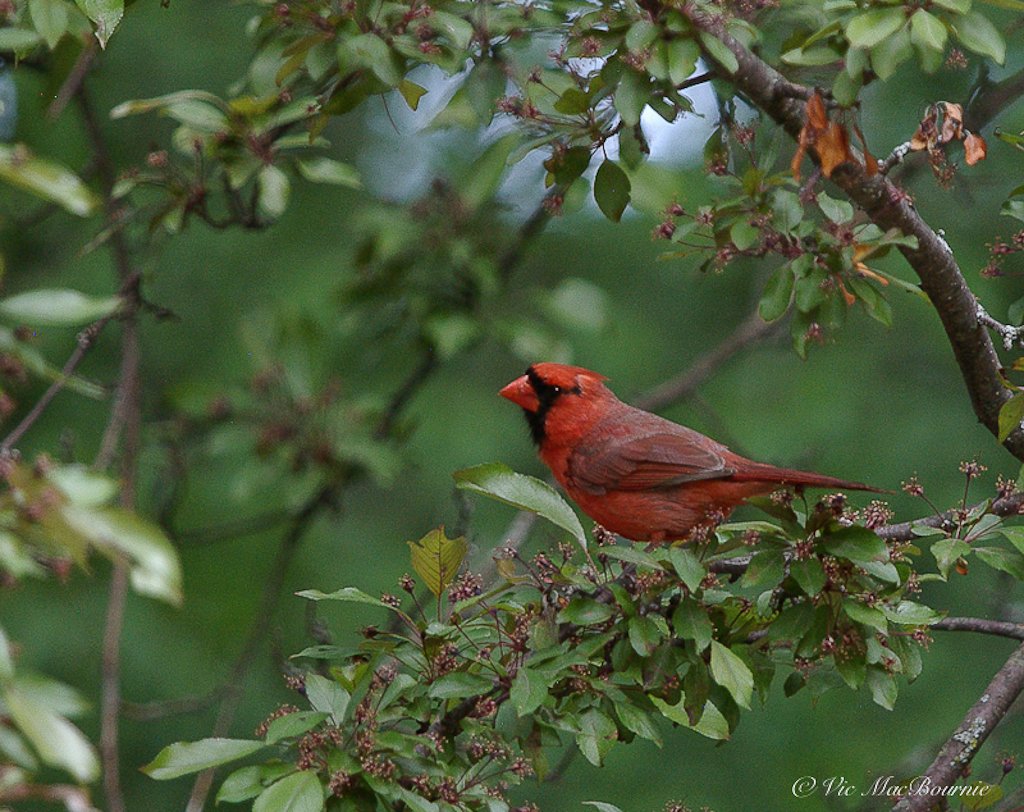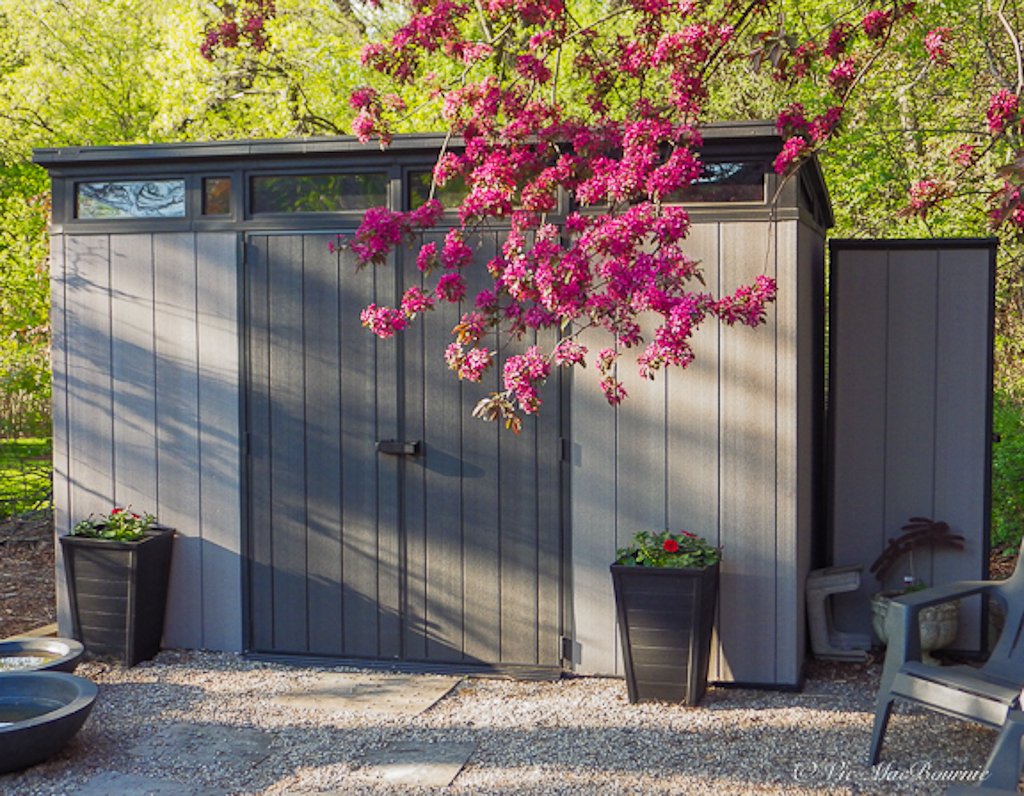Flowering Crabapple trees: Spring flowers and berries for the birds
Crabapple trees are sometimes overlooked in the landscape because over the years they have become quite common. But they can be the perfect understory tree for both small and large yards.
Flowering crab is ideal for yards big and small
Flowering Crabapple trees have always been a popular under story tree providing homeowners with impressive spring flowers followed by an abundance of bird-loving berries later in the summer through fall.
Their popularity, however, has meant they are easily overlook when it’s time to consider purchasing a new tree for the front or back yard.
But that would be a mistake.
Crabapples are excellent understory trees that offer a full range of sizes, flower and leaf colour as well as an abundance of fruit for birds and other wildlife. They are long-lived trees that are hardy in zones 4-8. The leaves provide habitat and larval food for many species of moths and butterflies and the spring flowers provide food for early pollinators. As the trees age, it becomes home to lichens and fungi and the gnarly branches and trunks often have lots of cavities for nesting birds.
Crabapples have become a staple in urban landscapes and are used as dependable street trees and ornamental options. If allowed to grow to their natural shape, they have and irregular rounded shape with a wide spreading canopy.
Are crabapples good to eat?
Most crabapples are edible although their level of bitterness varies considerably and their level of acidity varies considerably. In the United States crabapples have had a place in culinary and beverage industries.
Crabapples’ history is actually tied to the making of hard cider in the 1600s and 1700s. This tart little fruit can make a really interesting hard cider. They have also traditionally been grown commercially to make crabapple jellies.
Crabapples’ flower show is short lived
Although many homeowners purchase flowering crabapples for their outstanding spring show, gardeners should remember that the flowers only last 2-3 weeks.
It is, therefore, what the crabapple looks like for the rest of the year that makes a more lasting impression on the landscape. There are plenty of crabapples with green leaves, but there are also plenty with leaves that have a lot of red in them to help provide an accent in what would otherwise be a very green landscape during the summer.
There are large crabapples that can grow up to 30 feet tall, and dwarf varieties that stay in the five feet by five foot wide range.
Four great crabapples to consider in the woodland
Prairie Fire crabapple – is a hybrid that feature many of the traits of other great crabapple varieties. It blooms bright pink in the spring, sports dark green leaves with a purplish overcast throughout the summer, and dark purplish-red fruit in the fall that attract birds all winter. It’s hardy in zones 4 through 8 and has excellent disease resistance. One of its finest traits is that Prairie Fire happily tolerates clay soil. It stays on the small size into maturity and is an ideal urban landscape tree.
Purple Prince Crabapple – has a massive flower disply in spring along with its purple foliage following soon after. Hardy in zones 4-8, it is well known for its improved disease resistance and stands about 16-18 feet tall and 15-18 feet wide.
Sargent Crabapple – A perfect ornamental tree for small urban yards. Grows only 8-10 feet tall and 8-12 feet wide It buds are dark pink but blooms white attracting all the pollinators. The flowers are followed by bright red berries that birds can snack on all winter. Hardy to zones 4-8.
Royal Raindrops Crabapple – Blooms deep pink along upward spreading branches. The leaves flush out a reddish purple colour and stay dark green with a purple overcast throughout the sumer. Small purple berries stay on the tree all winter to feed birds and other backyard wildlife. It is happy to grow in zones 4-8.
Like many overly-hybridized flowers, trees and shrubs that do not have fruit, the Spring Snow crabapple may appeal to those who want a crabapple without any of the fruit. Fragrant wihite blooms in an upright form that grows to between15-25 feet tall and a similar similar width. I can’t recommend these overly hybridized trees that offer little to nothing for wildlife, but I recognize they may have a place in a garden close to a patio, deck or cement pathway.
If you do plant a sterile tree, try to ensure you plant plenty of native plants, shrubs and trees to help the wildlife that will get no benefit from the sterile tree.
Two mature crabapples in our woodland, wildlife garden
Our two large crabapples are fully mature specimens that take centre stage in the garden at certain times of the year where they take up residence growing across the back of the property.
I’ve never really looked into exactly what variety we have, but they are most likely of the Royal Raindrop hybrid series with an abundance of deep pink flowers along its branches. The leaves of our crabapples flush out a reddish purple colour and stay dark green with a purple overcast throughout the summer. An abundance of small purple berries remain on the tree all winter and feed the resident and migratory birds.
Our neighbours planted smaller more upright crabapples (Harvest Gold) that sport larger fruit that has a distinctive yellow colour and remain on the branches well into the winter. These are a popular ornamental variety that really stand out in the winter landscape.
(here is an excellent Chart from Frank Schmidt and Son that illustrates the variety, shape, and flower colours of a host of crabapples.
Our crabapples have been pretty much ignored since we moved to the property more than 25 years ago. Besides thinning out some dead branches over the years, we have done little to the trees and prefer them to take on a natural rounded look.
Originally, the trees were surrounded by grass, but over the years, we have ignored the grass and planted native wildflowers around them allowing the area to become a mini meadow. I think the two crabapples are much happier growing in a more natural area and the wildlife that live off the tree are provided with a soft landing. (For more on the importance of providing a soft landing check out this link to the University of Minnesota Master Gardeners Extension.)
Besides cutting out a few dead branches, the trees have been more or less maintenance free while providing outstanding deep red spring colour followed by a small, hard, red berry that persists well into winter, just when birds are looking for a high quality food source.
I’ve noticed that more and more of our American Robins that are remaining in our snow-covered landscapes throughout winter, are using the crabapples as a food source throughout the winter. Waxwings also appear in large flocks to work the crabapples.
Why are crabapples so easily overlooked?
As a child growing up in the 1960s and '70s, I remember the abundance of crabapples in our suburban neighbourhood. My best friend’s family had a lovely crab apple that bloomed a soft pink in the spring and was covered with crab apples throughout the summer into fall. I don’t remember birds devouring the berries but I do remember some awesome crab apple fights among the neighbourhood kids (no eyes were lost.)
Image shows a male cardinal in a flowering crab just as the flowers have ended and the fruit is beginning to form on the tree.
I also remember annual fall cleanups of hundreds of thousands of crab apples in the grass, on the sidewalk and spilling out on the road.
The crab apples were smallish and hard and although there was an abundance of them, they were not particularly problematic.
I can’t say the same for my other buddy’s crab apple. That family’s crab apple tree produced large (almost miniature apples) that rotted quickly and became very messy. They were particularly attractive to wasps craving the sugar content after the crabapples were crushed all over the sidewalk and road. the crabapples were so numerous that they created a hazard almost like walking on marbles. Eventually, most years there were so many on the ground that they had to be cleaned up with brooms and shovels.
That was an example of the wrong tree for the area so close to the sidewalk. The same tree planted in a garden setting would create the perfect wildlife viewing and photography stage as all the neighbourhood birds and animals would flock to the area for the sweet food source.
It’s situations like this that probably convinced today’s gardeners that crab apples are messy trees that they don’t want in their landscapes. I can understand that thinking entirely.
Plant crab apples in the right area
In the right location, crab apples can be outstanding specimen trees in both large or small yards.
A blue jay among the flowers of a crab apple tree in spring.
Plant them in an area where the berries are free to fall to the ground as a source of food for birds and other backyard wildlife and let them clean up the ground under the tree. Of course, grass is never the best ground cover in a woodland setting, especially if you are striving for the perfect lawn.
Image shows our mature crabapple in flower in the landscape.
A more natural ground cover where the berries can be left in place rather than “cleaned up” creates a much more sustainable situation in the garden.
A Crabapple branch in full flower hangs in front of a grey Keter shed.helping to set off the dark pinks of the crabapple flowers.
Pruning crabapples: leave them natural
Please refrain from over pruning your crabapple trees into ridiculous balls or other unnatural shapes. I’ve seen too many crabapples that have been trimmed back to the extreme leaving only a trunk with a small ball of branches. I guess this is done to keep the tree small. Like most trees, it is best to leave them to grow into their natural shape, which in the case of a crabapple, usually mean a spread as wide as their height. Celebrate them and enjoy their natural beauty.








